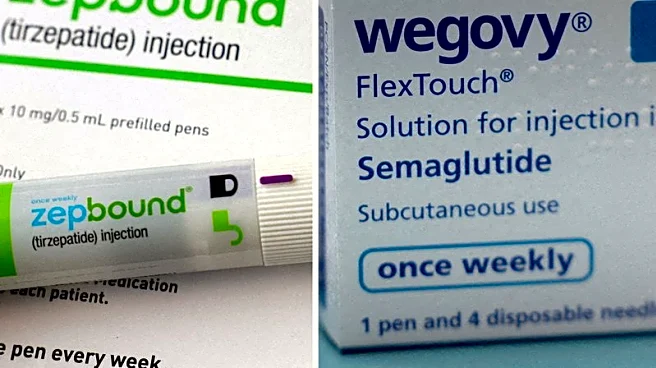What's Happening?
Jim Cramer, host of CNBC's Investing Club, is contemplating trimming his position in Eli Lilly as the pharmaceutical company's stock approaches a $1 trillion market cap. Eli Lilly's shares rose nearly
5% following an upgrade from Leerink, which cited the company's GLP-1 pricing deal with the Trump administration and anticipated waves of obesity treatment adoption. The stock has seen significant gains, prompting Cramer to consider selling due to its parabolic rise. Cramer emphasizes the importance of selling stocks that experience rapid increases, maintaining a sizable position in Eli Lilly while acknowledging its competitive advantage over rivals like Novo Nordisk.
Why It's Important?
Eli Lilly's stock performance is significant as it reflects investor confidence in the company's strategic moves, particularly in the obesity treatment market. The potential expansion of Medicare and Medicaid access by 2027 could drive further adoption of Eli Lilly's treatments, impacting the healthcare industry and patient access. Cramer's decision to potentially trim his holdings highlights the importance of managing investment risks in rapidly rising stocks. The pharmaceutical sector's dynamics, influenced by government policies and market demand, are crucial for investors and stakeholders monitoring healthcare innovations and financial strategies.
What's Next?
As Eli Lilly's stock continues to rise, investors and analysts will closely watch the company's strategic decisions and market performance. The upcoming earnings report will be pivotal in assessing the sustainability of Eli Lilly's growth and its competitive positioning. Stakeholders will also monitor the impact of expanded healthcare access on the company's revenue and market share. Cramer's potential stock sale could influence other investors' decisions, reflecting broader market sentiment and investment strategies in the pharmaceutical sector.
Beyond the Headlines
The developments around Eli Lilly's stock and its market cap raise questions about the ethical implications of healthcare pricing and access. The company's pricing strategies and government deals could set precedents for other pharmaceutical firms, affecting drug affordability and patient care. Additionally, the focus on obesity treatment highlights societal health challenges and the role of pharmaceutical companies in addressing them. The intersection of healthcare policy, corporate strategy, and market dynamics presents complex challenges and opportunities for stakeholders.












